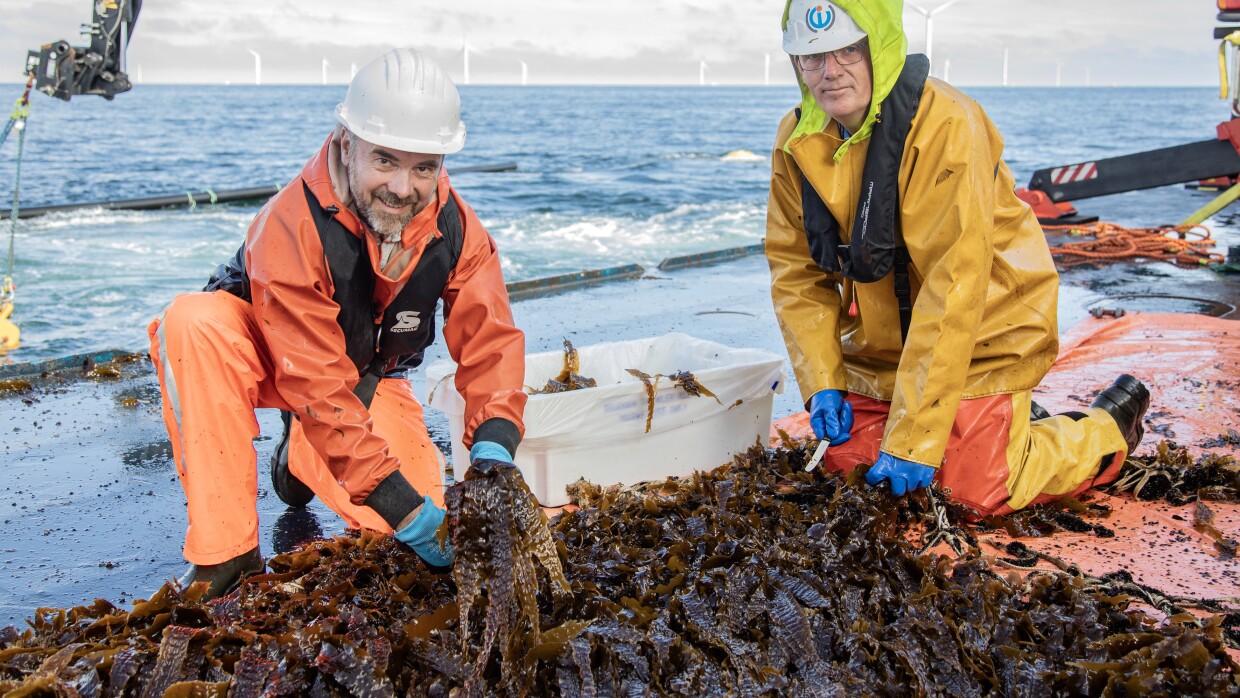The world’s largest industrial seaweed farm will provide insights into seaweed’s potential for carbon capture and its interactions with the marine ecosystem following its first harvest.
A major milestone has just been reached with the first seaweed harvest at the world’s largest industrial seaweed farm, located in the heart of an offshore wind farm. This innovative farm, situated off the coast of the Netherlands, is developed by North Sea Farmers, a nonprofit organization. The project receives €2 million from Amazon’s Right Now Climate Fund, a $100 million initiative dedicated to environmental projects combining planetary protection with support for local communities.
This harvest provides valuable data to researchers studying the capacity of seaweed farms to capture atmospheric carbon and enhance climate resilience. The experiment will serve as a model for developing similar projects in other parts of the world.
“This first harvest confirms the potential of our approach,” says Eva Faict, Amazon’s head for the Netherlands and Belgium. “In partnership with North Sea Farmers, we have demonstrated the economic viability of seaweed cultivation within offshore wind farms.”
The choice to locate the farm between offshore wind turbines protects the crops from maritime traffic in the North Sea. Harvesting is carried out using a specialized vessel that collects mature seaweed from four large nets measuring 50 meters by 3 meters, securely anchored to the seabed.
Our ongoing scientific research aims to evaluate the long-term impact of these farms on biodiversity and their potential contribution to climate resilience. At the same time, we demonstrate the feasibility of commercial-scale seaweed production within existing offshore infrastructure.
Eef Brouwers
General Director of North Sea Farmers, a nonprofit organization
The harvested seaweed has numerous applications in textiles, food, and cosmetics, highlighting its commercial potential for European markets. This form of cultivation offers the advantage of requiring no land, freshwater, or fertilizers.
A multidisciplinary team of researchers from Plymouth Marine Laboratory, Deltares, and Silvestrum Climate Associates has been monitoring the farm’s progress for a year. Their analyses will focus on seaweed growth, carbon capture capacity, and the impact on the marine ecosystem.
Professor Ana M. Queirós, climate change specialist at Plymouth Marine Laboratory and chief scientist of the project, explains: “Our study assesses the overall impact of the farm on the marine environment, including the carbon cycle and biodiversity. This scientific data is essential to validate the effectiveness of such projects and identify sustainable, scalable solutions to climate challenges.”
This pioneering harvest, located in the Hollandse Kust Zuid (HKZ) wind farm 18 kilometers off the coast of Scheveningen, is the culmination of three years of work.
In France, Amazon’s climate fund also supports large-scale environmental projects. Since 2022, a €3 million commitment alongside CDC Biodiversité has launched 31 ecological restoration projects under the Nature 2050 program. These initiatives, which aim to restore the equivalent of 200 hectares of natural spaces, have already enabled the planting of over 54,000 trees, the creation of 53 kilometers of hedgerows, and the restoration of 37 hectares of wetlands.
Source: amazon



